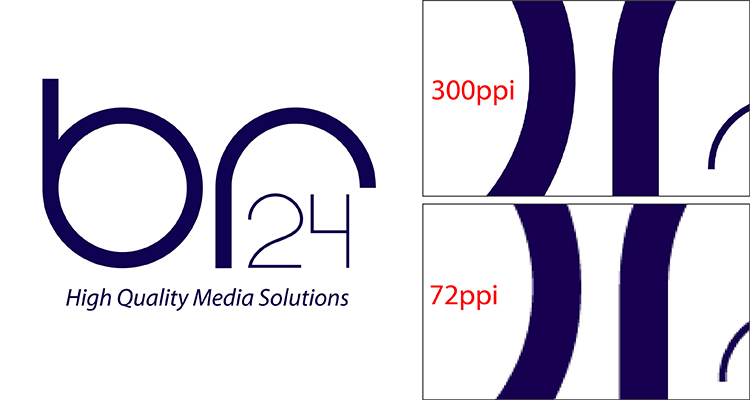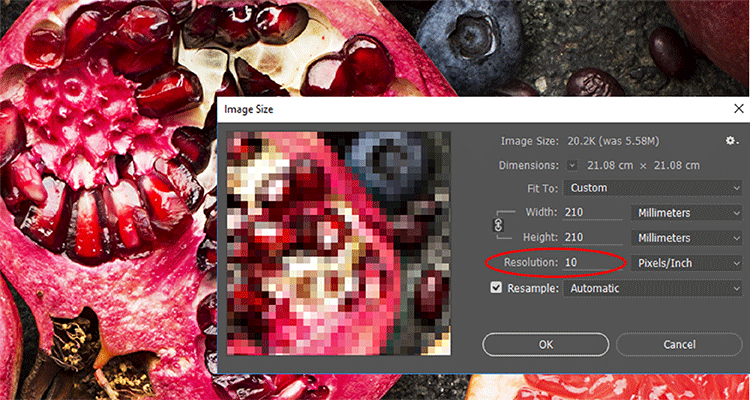PPI, DPI? We have the resolution
In the context of photography and image editing, the terms PPI and DPI are frequently used. And just as often, they cause confusion. Because both terms are often used interchangeably nowadays, even by many software manufacturers. What lies behind the terms? And what do they have to do with image quality?
What is what?
First, we need to clarify the terminology.
Each digital image file consist of a certain number of pixels. PPI stands for “pixels per inch”. PPI describes the relative resolution of an image that is printed in a certain size. And indicates the number of pixels displayed in one inch (2.54 centimetres). PPI is also known as pixel density.
Then there is also the absolute resolution of an image, the pixel dimension. The specific number of pixels in horizontal and vertical directions that is independent of the output size. When an image size is specified in pixels, it is always the absolute size that indicates how many pixels the image consists of (for example 6000 x 4000 pixels = 6000 pixels wide, 4000 pixels high).
DPI stands for “dots per inch” and is a technical term from printing. The term refers to the number of physical printing dots in a printed document, the density of dots when printing. For example, if a printer reaches a resolution of 1200 DPI x 600 DPI, this means 1200 x 600 print dots are distributed at one inch when printing. The size of the print dots varies between different printers.
What happens if PPI/DPI is changed?
An example illustrates this best:

Both images have exactly the same absolute resolution of 20 x 4 pixels. The left image has a relative resolution of 10 PPI, on one inch 10 pixels are displayed. The right image has a relative resolution of 20 PPI, on one inch 20 pixels are displayed. Despite different PPI, the absolute resolution has not changed. Only the output size, the printed image size, is different. The left file is twice the size of the right size in the output.
If the PPI is subsequently changes in an image, the number of pixels does not change. But the number of pixels that are displayed at one inch. And that affects output size and quality in printing. The higher the PPI, the smaller but also the sharper the printed image. There are more information (in the form of pixels) on a smaller area. By contrast, with a low PPI, the print output will be larger, but also more pixelated.

To change, for example in Photoshop, the actual image size (means the absolute resolution) by adjusting the PPI, usually the so-called “Resampling” is used. If the PPI is changed in this case, the image size or absolute resolution will change accordingly. However, this usually has a negative impact on the quality. Because downsampling artificially decreases the number of pixels in the image, while upsampling increases the number.

PPI/DPI and quality
Basically, the PPI of an image file does not say anything about the quality of an image. PPI must always be specified together with the desired output size. And in addition the absolute resolution, the actual image size, is crucial for the image quality. PPI and the desired output size determine together which absolute resolution or which size the digital image should at least have, in order to achieve a high-quality result.
When, for example, displaying an image on a monitor the PPI is irrelevant. If images are used online the PPI often is reduced to 72 PPI with the aim to optimize the image for Web. However, as described, changing the PPI only changes the output size for printing. The digital image size and also the file size remain the same. Only by further adjustments (change of the relative resolution, suitable compression etc.) the image is optimised for online use.
For the highest quality and the best possible advice, the knowledge about PPI, DPI, resolution and their connection is important in image editing.
Br24 – The resolution for your image editing and more!
- 2023
- January (1)
- 2022
- December (2)
- November (1)
- October (2)
- September (2)
- August (1)
- July (1)
- June (1)
- May (1)
- April (1)
- March (1)
- February (1)
- January (3)
- 2021
- December (2)
- November (1)
- October (3)
- September (2)
- August (1)
- July (3)
- June (1)
- May (2)
- April (1)
- March (1)
- February (2)
- January (4)
- 2020
- December (2)
- November (3)
- October (4)
- September (1)
- August (2)
- July (1)
- June (2)
- May (3)
- April (3)
- March (3)
- February (4)
- January (4)
- 2019
- December (1)
- November (2)
- October (5)
- September (1)
- August (3)
- July (2)
- June (2)
- May (3)
- April (2)
- March (3)
- February (2)
- January (4)
- 2018
- December (2)
- November (2)
- October (3)
- September (3)
- August (2)
- July (2)
- June (2)
- May (1)
- April (1)
- March (2)
- February (3)
- January (2)
- 2017
- December (2)
- November (2)
- October (1)
- September (1)
- August (1)
- July (1)
- June (1)
- May (1)
- April (1)
- March (1)
- February (1)
